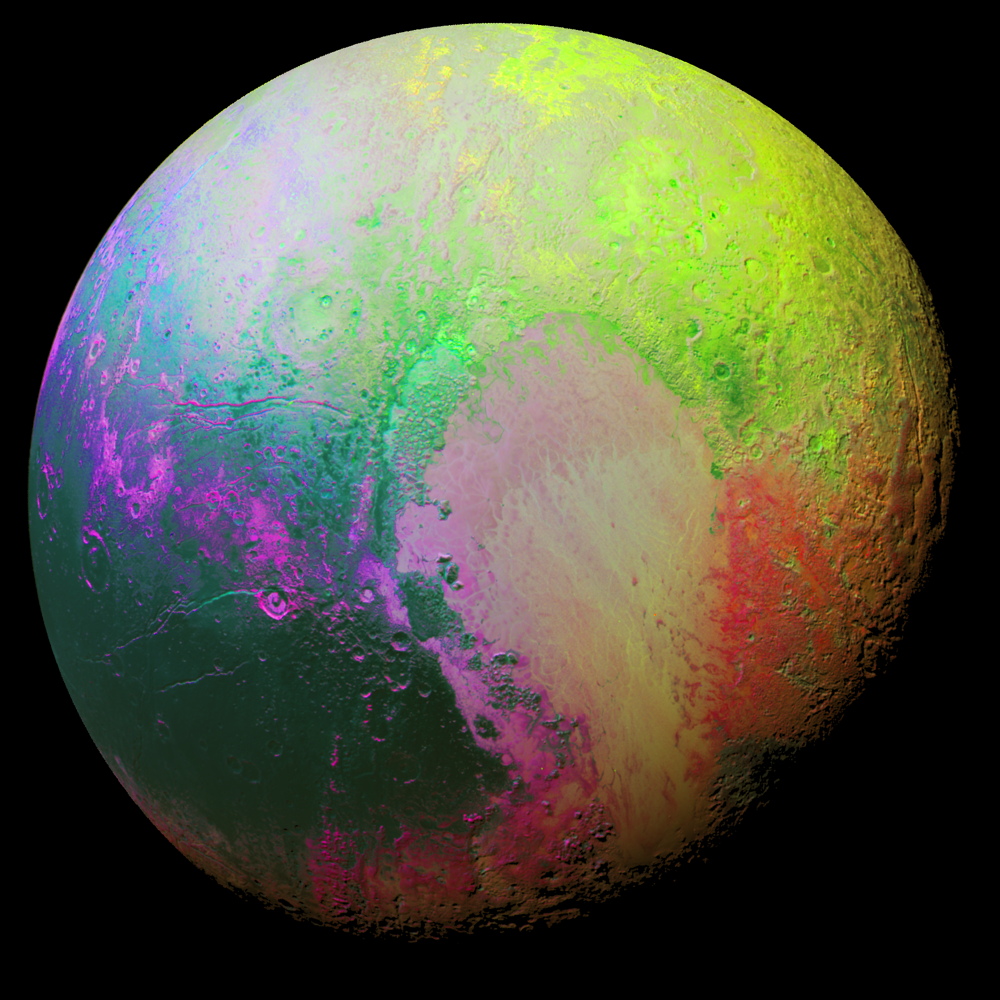Pluto Goes Psychedelic in Brilliant New Photo

Pluto's the prettiest dwarf planet at the party in this new, brilliantly colored image recently released by NASA.
Researchers used a process called principal component analysis to create the false-colored photo of Pluto, which highlights the subtle color differences among the different regions, NASA officials said in a statement. The original image was captured by the Ralph/MVIC color camera on NASA's New Horizons spacecraft as it passed within about 22,000 miles (35,000 kilometers) from Pluto during its flyby in July.
Pluto's geography has already proven astonishingly varied as New Horizons continues to send back detailed observations from its flyby. Flattened, icy plains; jagged ridges; deep craters; and even enormous mountains that are potential icy volcanoes all have been spotted on the dwarf planet.
The New Horizons spacecraft just recently got in place to fly past the Kuiper Belt object 2014 MU69, a small, cold target more than a billion miles (1.6 billion km) outward from Pluto, a trip that will take an additional 3 years — and as it continues its long journey, scientists will keep poring over its Pluto flyby transmissions.
Email Sarah Lewin at slewin@space.com or follow her @SarahExplains. Follow us @Spacedotcom, Facebook and Google+. Original article on Space.com.
Breaking space news, the latest updates on rocket launches, skywatching events and more!

Sarah Lewin started writing for Space.com in June of 2015 as a Staff Writer and became Associate Editor in 2019 . Her work has been featured by Scientific American, IEEE Spectrum, Quanta Magazine, Wired, The Scientist, Science Friday and WGBH's Inside NOVA. Sarah has an MA from NYU's Science, Health and Environmental Reporting Program and an AB in mathematics from Brown University. When not writing, reading or thinking about space, Sarah enjoys musical theatre and mathematical papercraft. She is currently Assistant News Editor at Scientific American. You can follow her on Twitter @SarahExplains.
